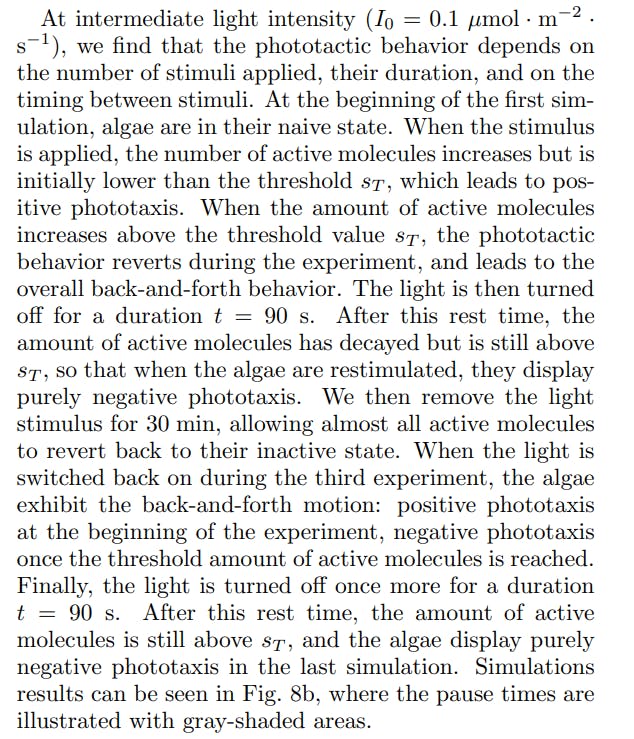
2024-9-12 02:0:17 Author: hackernoon.com(查看原文) 阅读量:3 收藏
Authors:
(1) Taha Laroussi, Laboratoire d’Hydrodynamique (LadHyX), CNRS, Ecole Polytechnique, Institut Polytechnique de Paris, 91120 Palaiseau, France;
(2) Mojtaba Jarrahi, Universit´e Paris-Saclay, CNRS, FAST, 91405 Orsay, France;
(3) Gabriel Amselem, Laboratoire d’Hydrodynamique (LadHyX), CNRS, Ecole Polytechnique, Institut Polytechnique de Paris, 91120 Palaiseau, France.
Table of Links
Discussion, Acknowledgements and References
IV. MODEL




A prediction of the model is that algae can switch behavior successively from positive phototaxis, to backand-forth, to negative phototaxis before reverting back to positive phototaxis. Such is the case for three consecutive stimuli of I0 = 0.02 µmol · m−2 ·s −1 spaced by 90 s and a pause of 30 min before the fourth stimulus, see Fig. 8d.

This switch through all phototactic behaviors requires a precise tuning of both the light intensity and the waiting times, which is experimentally tedious. We were however able to experimentally observe the switch from positive to back-and-forth behavior and from back-and-forth to negative behavior, see Supp. Fig. 5.

如有侵权请联系:admin#unsafe.sh